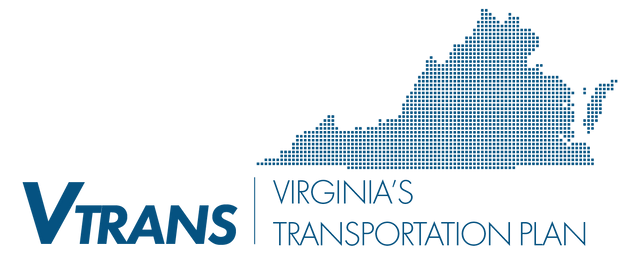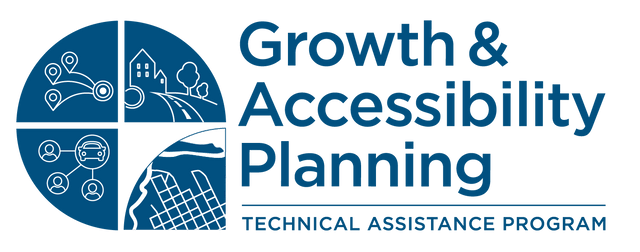Explore the history of VTrans over the last two decades, beginning with the latest update below.
Archive of Past VTrans Plans
The first VTrans plan was adopted nearly 20 years ago, and it has been updated several times since then.
The Secretary of Transportation, Commonwealth Transportation Board (CTB), VDOT, and DRPT have worked closely and continuously with partner transportation agencies over the past 20 years to build the strong relationships and technical expertise needed to support and implement effective results-oriented updates to VTrans. By working together to establish, implement, and regularly update the VTrans vision, goals, and policies, Virginia’s transportation agencies and decision makers have created a solid, dependable framework for continuous improvement.
This page contains a description of previous VTrans updates, as well as documents relevant to each update, listed in reverse chronological order.
2021 Update of VTrans
The 2021 Update of VTrans marked a departure from product-based planning to more process-based planning. The plan is differentiated between mid-term (0-10 years) and long-term planning (20+ years). The 2021 Update included three significant policies:
- Policy for the Identification and Prioritization of VTrans Mid-term Needs: The Commonwealth Transportation Board (CTB) established policies to identify and prioritize capacity and safety-related transportation needs using performance-based planning to provide transparency and clarity to local and regional partners.
- Policy for the Development and Monitoring of VTrans Long-term Risk & Opportunity Register: The policy included five steps to identify, analyze, and monitor powerful and transformative trends that impact the transportation system. It marked a departure from the practice of forecasted traffic and acknowledged uncertainty associated with large societal factors, referred to as Megatrends, on Virginia’s transportation system.
- Strategic Actions: The Strategic Actions are intended to ensure that the Commonwealth achieves its transportation Vision, Goals, and Objectives by addressing mid-term (0-10 years) and long-term (20+ years) planning issues.
The plan established InteractVTrans to deliver VTrans-related outputs in a digital and more accessible format. Over 200 meetings were conducted, and 2,500 comments were received. InteractVTrans, an online repository for all VTrans outputs, was accessed more than 1,000 times in a typical month over a four-year period, indicating a higher-than-typical level of engagement.
VTrans2040 Update
The VTrans2040 Vision Plan and Needs Assessment were adopted at the end of 2015, followed by the mid-term Year 2025 Recommendations for priority investments in early 2018. It includes an updated vision, goals, and objectives and a set of guiding principles to support the commitment to performance-based planning set forth in VTrans2035.
Needs Assessments by Travel Market
VTrans2035 Update
The VTrans2035 Update, completed in 2013, focused on transforming the existing components of VTrans2035 into a new framework for linking system-wide performance evaluations to planning, policy development, and funding decisions. Using this “performance-based planning” framework, transportation agencies and decision-makers can use information about projected transportation needs with assessments of current system performance to develop cost-effective strategies that simultaneously address existing transportation needs and anticipated future conditions. It also includes a stand-alone Action Plan of implementation strategies designed to help guide individual modal agencies with yearly Business Plans.
VTrans2035
VTrans2035, and the accompanying Virginia Surface Transportation Plan, was approved by the CTB in 2009. The plan included a review of accomplishments since VTrans2025, socioeconomic trends and forecasts, an exploration of the long-term viability of the motor fuels tax, a series of issue papers transportation policy trends and choices related to safety, system preservation, freight, mobility, accessibility/connectivity, land use, regionalism, economic development, technology, congestion and environment, an integration of modal agency plans, a high-level needs assessment and strategies to improve movement on Corridors of Statewide Significance, an analysis of the economic impact of transportation investments, and a consideration of transportation funding levels.
VTrans2025
VTrans2025 was completed in 2004. It was developed by the Secretary of Transportation through the collective work of four State transportation modal agencies: Department of Aviation (DOAV), Department of Rail and Public Transportation (VDRPT), Port Authority (VPA), and the Department of Transportation (VDOT). The final report included a Vision/Policy Plan that included goals, objectives, performance measures, and an implementation plan, as well as an inventory and evaluation of the existing system, a trend analysis, an evaluation of policies, practices, and procedures that impact transportation, and mode-by-mode needs assessments.


